Lorna Simpson, a luminary in the contemporary art scene, paints with the strokes of cultural narratives, challenging perceptions and weaving stories that transcend the ordinary. With a practice deeply rooted in exploring the complexities of identity, race, and gender, Simpson’s art serves as a cinematic journey into the realms of African-American experiences. Renowned for her ingenious use of photography and video, Simpson’s creations embody not just visuals but profound ideas that provoke thought and stir emotions. As a trailblazer, her influence extends beyond the canvas, leaving an indelible mark on the intersection of culture and art. Now, let’s dive into the captivating world of Lorna Simpson artworks, where each piece is a chapter in the story she masterfully unfolds.
1. Necklines (1989)
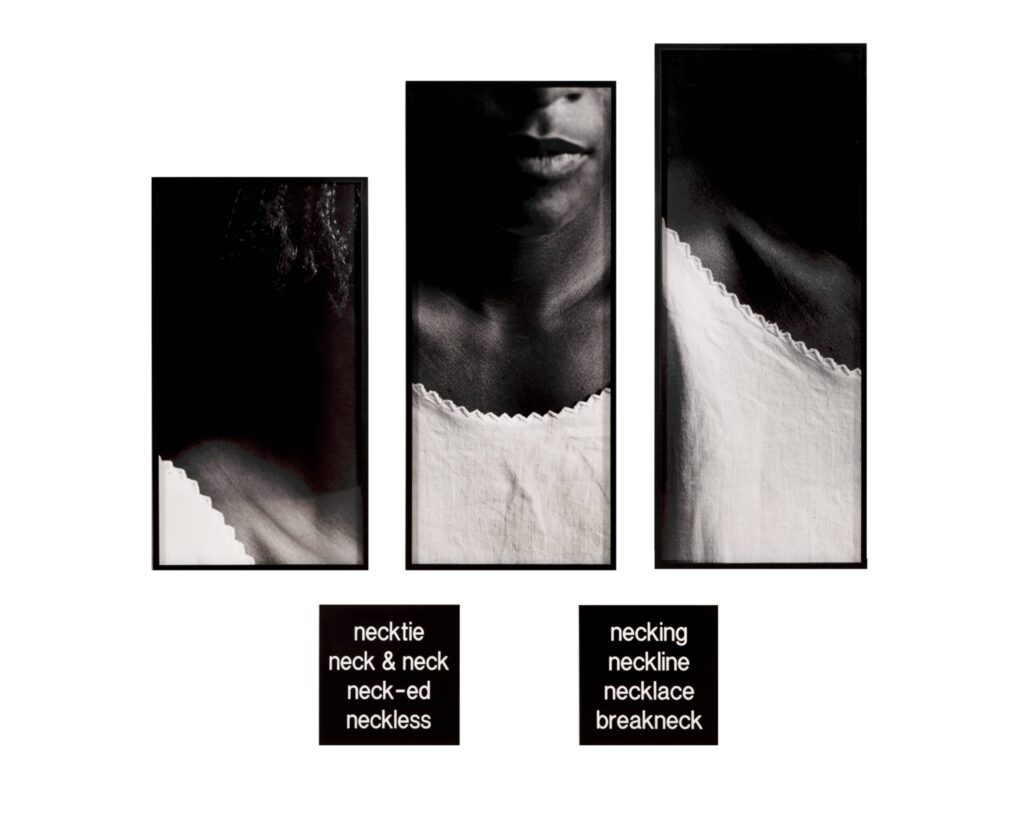
| Date of Completion | 1989 |
| Dimensions | 21 x 28 inches |
| Location | Nestled in a private collection |
Imagine a tic-tac-toe board, but instead of Xs and Os, it’s a grid of 16 photographs capturing the intricacies of braided hair. Welcome to “Necklines,” a groundbreaking piece that catapulted Simpson into the limelight. This artwork challenges societal perceptions of race and identity, using the back of the head as a canvas for cultural heritage. It’s not just a painting; it’s a celebration of fabulousness.
2. Nightmare? (2015)

| Date of Completion | 2015 |
| Dimensions | 16 x 20 inches |
| Location | Currently taking center stage at MoMA, New York |
“Nightmare?” is a thought-provoking riddle painted on canvas. An innocent image coupled with a bold question mark beckons you into a world of enigma. It’s not actually a nightmare; it’s a dream for your brain! Simpson’s use of text and image prompts a dialogue on the complexities of language and race, inviting viewers to unravel the mysteries beneath the surface.
3. Three Figures (1988)
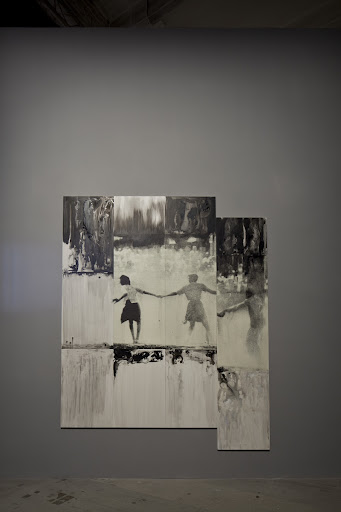
| Date of Completion | 1988 |
| Dimensions | 8 x 10 inches each |
| Location | Safely tucked away in Lorna’s personal gallery |
“Three Figures” presents a trio of enigmatic superheroes, draped in layers of identity. Faces intentionally blurred, Simpson challenges you to see beyond the surface. It’s like a mystery novel unfolding on canvas, inviting viewers to become open detectives in the world of contemporary art.
4. Slip (left) and Suspended (right) (2016)
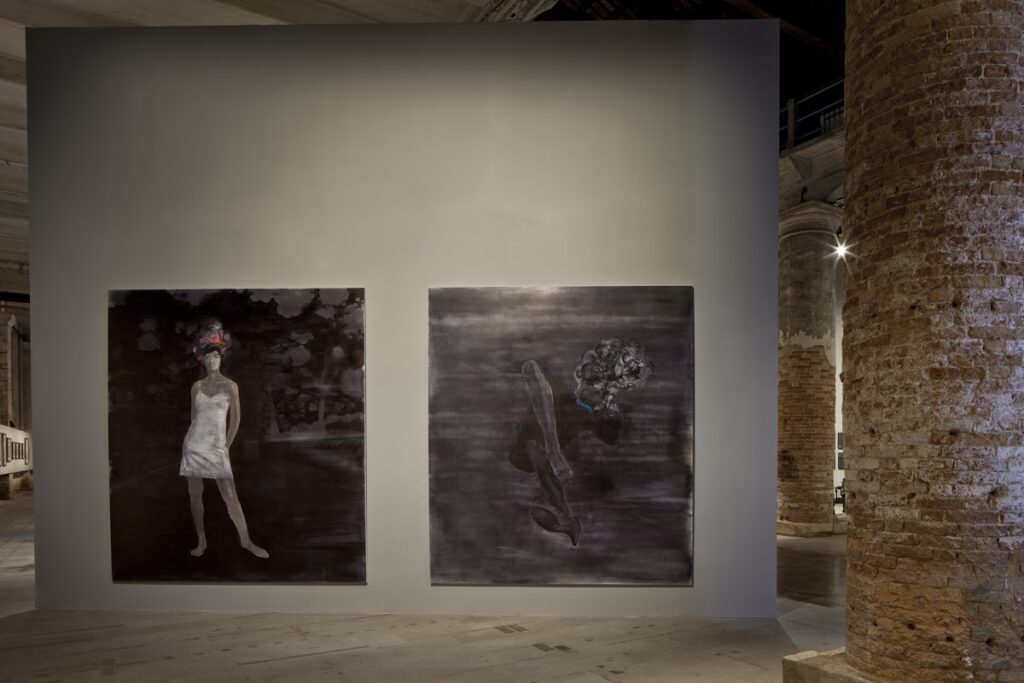
| Date of Completion | 2016 |
| Dimensions | A grand 74 x 37 inches each |
| Location | Making waves at the Whitney Museum of American Art, New York |
“Slip (left) and Suspended (right)” is the art world’s equivalent of a dance-off. Photographs and text twirl together in a visual symphony, creating a masterpiece that’s not just seen but experienced. It’s a tango into the world of interpretation, where every step leaves a mark on your artistic soul.
5. Easy to Remember (2001)
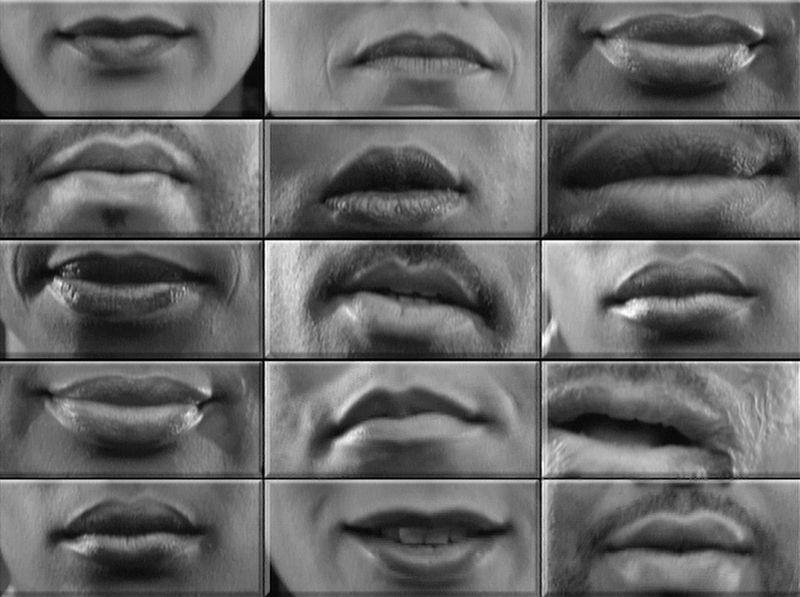
| Date of Completion | 2001 |
| Dimensions | A cinematic 36 x 49 inches |
| Location | Taking residence at SF MoMA |
“Easy to Remember” takes you on a vintage voyage. A classic photograph meets a cascade of text, creating a time-traveling narrative that’s not just easy to remember but impossible to forget. Simpson’s art challenges viewers to reflect on societal norms and the enduring nature of memory. It’s not just a painting; it’s a ticket to a bygone era.
6. Counting (1991)
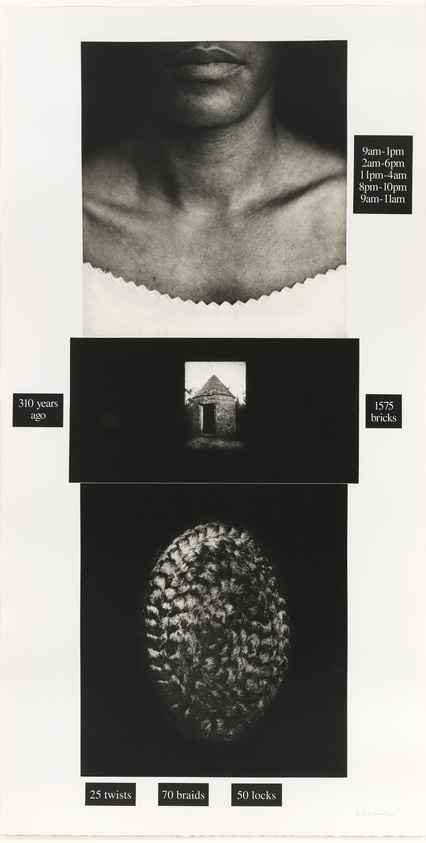
| Date of Completion | 1991 |
| Dimensions | 40 x 30 inches of rhythmic brilliance |
| Location | Currently in the rhythmic embrace of the Museum of Fine Arts, Boston |
“Counting” is a rhythmic masterpiece that’s not just about numbers. It’s a visual drumbeat that makes you want to tap your foot and, well, count. But here’s the twist: the challenge isn’t just counting the obvious; it’s about finding the hidden beats between the frames. Simpson’s art challenges you to dance to the rhythm of your own interpretation.
7. Midnight LA time (2019)

| Date of Completion | 2019 |
| Dimensions | A cinematic 60 x 90 inches |
| Location | Safely nestled in Lorna’s personal treasure trove |
“Midnight LA time” is a nocturnal symphony that unfolds on the canvas. The city becomes a celestial dance floor, and Simpson’s lens turns ordinary scenes into a mesmerizing spectacle. It’s a midnight serenade for your eyeballs, inviting you to lose yourself in the beauty of the nocturnal.
8. Haze (1997)
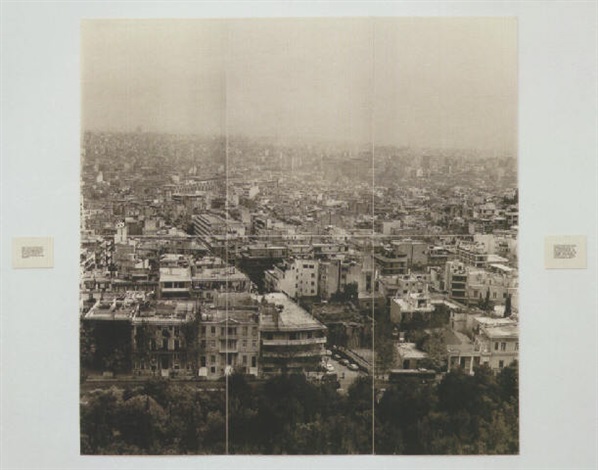
| Date of Completion | 1997 |
| Dimensions | 20 x 24 inches of misty magic |
| Location | Currently casting a spell at Tate Modern, London |
“Haze” is the visual equivalent of squinting into the unknown. Soft focus, muted tones – it’s like art in a foggy dream. Step into the history and let your imagination run wild. Simpson’s art challenges you to see beyond the obvious, to explore the beauty that lies within the haze.
9. Untitled (Upper Case and Lower Case Wigs) (1994)

| Date of Completion | 1994 |
| Dimensions | A whopping 70 x 120 inches of linguistic hair-raising fun |
| Location | Enjoying the spotlight at the Whitney Museum of American Art, New York |
“Untitled (Upper Case and Lower Case Wigs)” is a linguistic hair-raiser. Wigs become symbols of transformation, and upper and lower case letters join forces to create a visual alphabet soup. Decode the mystery of identity – it’s like Scrabble for your soul. Simpson’s art challenges you to play with words and unravel the layers of meaning hidden within the canvas.
10. C-Rations (1991)
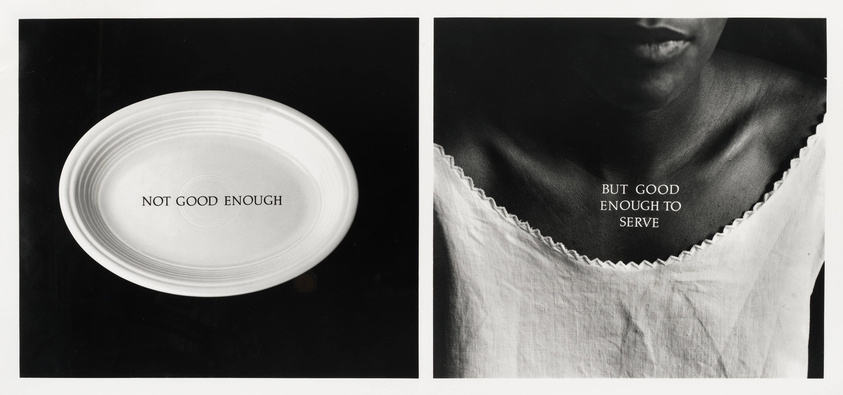
| Date of Completion | 1991 |
| Dimensions | 40 x 30 inches of visual feast |
| Location | Safely guarded in Lorna’s personal art fortress |
“C-Rations” is a visual feast that explores sustenance and survival. Military rations become metaphors, urging you to reflect on the basics of life. It’s not just about art; it’s about the art of living. Simpson’s creation challenges you to think beyond the canvas, to ponder the broader implications of the human experience.
Frequently Asked Questions
What is Lorna Simpson best known for?
During the 1980s, a series of artists, including Lorna Simpson, rose to prominence by incorporating identity politics into their works. The lives and experiences of those who are frequently marginalized in society—such as Black people, women, gender and homosexual people—are the subject of identity politics.
What awards has Lorna Simpson won?
Simpson is the recipient of multiple honors, such as the International Center of Photography’s Infinity Award (2010) and the Louis Comfort Tiffany Award (1991). In 1998, she was also considered for the Hugo Boss Prize. Simpson is a Brooklyn resident and worker.
What artistic techniques does Lorna Simpson use?
Lorna Simpson uses a variety of artistic techniques in her work, including photography, collage, sculpture, and drawing. She is known for her innovative way to conceptual photography.
Conclusion
So, there you have it, folks – a deep dive into the enchanting world of Lorna Simpson’s artistic wonderland. Her creations aren’t just paintings; they’re stories waiting to be told, mysteries begging to be unraveled. As you navigate the gallery of her mind, remember that art isn’t just about what you see; it’s about what you feel. So, let Lorna’s magic seep into your soul, and let the art adventure continue!












